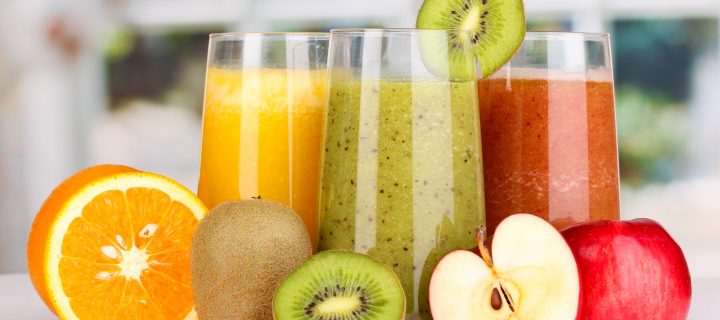Trying to assemble a well-balanced, healthy smoothie is similar to putting together a complicated Lego set: different pieces look good to throw on, but really add nothing, or are simply junk.
In fact, the selections at most smoothie shops include plenty of “healthy” add-ons that add nothing but a few inches to your waistline. Smoothies are popular, with ‘juicing’ diets for the diehards, replacing meals entirely with these thick drinks.
To decode the menu and start melting your belly for real, make sure you recognize and avoid five of the worst ingredients to add to your smoothie.
Fruit Juice
Wait, what? Isn’t this the backbone of some smoothies? Concentrated fruit juice is actually one of the worst things you can add. Even if you’re worried there isn’t enough liquid in your smoothie, don’t be tempted to add juice. Fruit juices lack the satiating fiber of fresh fruit, and even half a cup of orange juice adds 13 grams of carbs. It gets worse with smoothie chains – for example, some use orange and apple juices packing 68 grams of carbs and 58 grams of sugar into a small serving. That’s like drinking three Snicker bars!
Healthy Alternative: Try green tea.
Ice Cream or Sherbet

Don’t lie to yourself. Adding ice cream, frozen yogurt or sherbet to a smoothie doesn’t make it a ‘smoothie’. It’s a dessert. Using another smoothie chain example, Smoothie King offers a small (20 oz) Berry Punch that sounds like something healthy. But the raspberry sherbet in it contains 84 grams of sugar, doubling the amount of a McDonald’s Hot Fudge Sundae.
Healthy Alternative: A large scoop of unflavored Greek yogurt and handful of frozen fruit will give you exactly the same flavor and consistency.
Whey Protein
More popular amongst bodybuilders or people looking to gain muscle, the powders that use whey protein as a base can lead to bloating. If you’re bent on adding protein powder, look for a blended vegan protein powder instead. In a 2015 study in the Journal of Diabetes Investigation, researchers discovered that patients who ingested higher amounts of vegetable protein were far less susceptible to metabolic syndrome (high cholesterol, blood sugar, and obesity).
Healthy Alternative: Choose plant-based protein powders that side step the stomach-expanding side effects of whey and casein.
Canned Fruit
It’s a quick and easy shortcut to add canned fruit if you’re out of the real stuff. It’s also a quick and easy way to gain weight, too.
It’s packed with syrup — upwards of 20 grams of sugars a can! — and nasty additives such as artificial flavorings. Even unsweetened fruit in its own juices doesn’t cut it, with peeled fruit lacking crucial fibers.
Healthy Alternative: Might be a shocker, but fresh fruit is the best substitute. If it’s tough to have a consistent supply near your blender, frozen fruits are an option. Just read the labels on frozen packages to make sure there’s no added sodium, sugar, or chemicals.
Related: Super-Thick Smoothies: Today’s Hottest Weight Loss Trend
Fat-Free Flavoured Yogurt
You’d think it’d be an ideal fit for a smoothie, with its creamy texture and high protein value. And that’s all true – unless it’s flavoured or fat-free (yes, fat-free). Yogurts with fruit on the bottom or mix-ins like honey can contain up to 29 grams of sugar. And a 2015 study in the American Journal of Clinical Nutrition found that the more high-fat dairy products people ate, the lower their risk of diabetes. Skipping fat in dairy can cost you lean muscle, which will decrease strength and greater muscle wasting.
Healthy Alternative: Stick to plain yogurts that pack more protein than sugar.
Photo credit: Africa Studio/Shutterstock.com; AtlasStudio/Shutterstock.com












